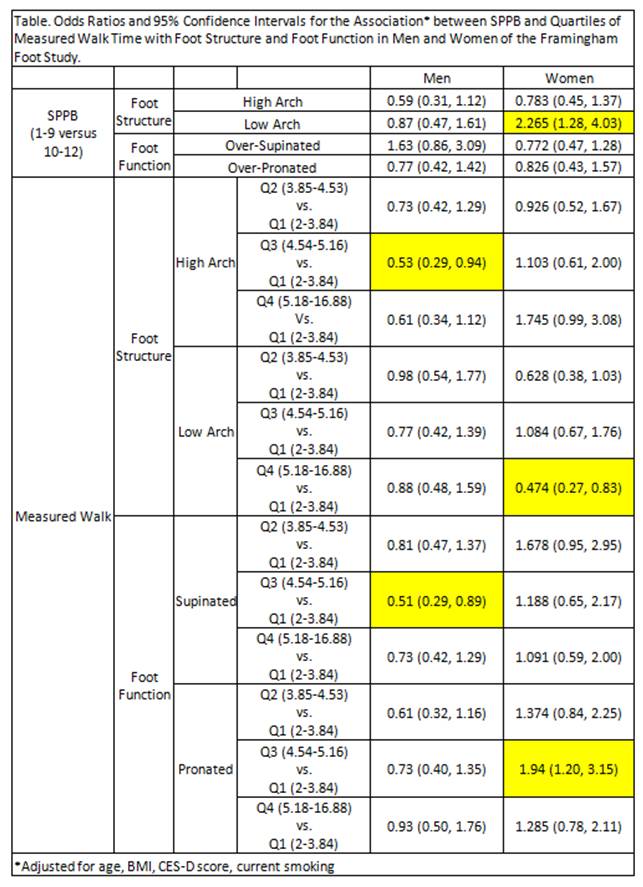Session Information
Session Type: Abstract Submissions (ARHP)
Background/Purpose:
While lower extremity function is thought to affect mobility, little is known of the influence of foot structure or function upon mobility limitations. We evaluated the associations of foot structure and foot function with mobility limitations in community-dwelling older men and women.
Methods:
Results:
In 556 men and 700 women, average age was 70 yrs (±10.8) and BMI was 28 (±5.2). 16% had mobility limitations, 30% had high arched and 27% had low arched foot structure; 33% had pronated and 27% had supinated foot function. Foot function was not associated with mobility limitations. In women only, low arched foot structure was associated with increased odds of mobility limitations (SPPB; OR=2.27, p=0.005) after adjustment (Table). No associations were seen between foot structure or function and chair stand time (ORs= 0.8-1.1, all p>0.4). In quartiles of walk time, men in the 3rd quartile, compared to the lowest (fastest), were less likely to have a high arch foot structure (OR=0.53) and supinated foot function (OR=0.51). Women with a low arched foot were less likely to be in the 4th quartile (slowest walkers) compared to the fastest walkers and women with a pronated foot function were more likely to be in the 3rd quartile of walking speed compared to the fastest walkers.
Disclosure:
A. B. Dufour,
None;
P. P. Katz,
None;
Y. M. Golightly,
None;
A. Awale,
None;
M. T. Hannan,
None.
« Back to 2014 ACR/ARHP Annual Meeting
ACR Meeting Abstracts - https://acrabstracts.org/abstract/the-effect-of-foot-pain-on-mobility-disability-in-older-adults-the-framingham-foot-study/

